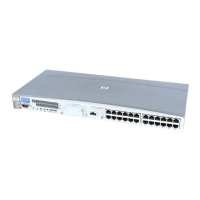Phase 3Phase 2Phase 1Phase 0
Restore user and
application data
using the standard
Data Protector
restore procedure.
Windows:
Restore critical
volumes using DDDR wizard,
remove the replacement disk
from the hosting system and
connect it to the target
system.
UNIX:
Restore the boot disk
of the original system onto
the replacement disk, remove
the auxiliary boot disk.
All systems: reboot the
system.
Additional steps are required
to perform advanced
recovery tasks.
Windows:
Connect a
replacement disk
to a hosting
system.
UNIX:
Connect the
auxiliary disk to
the target system.
All systems:
repartition the
replacement disk
and re-establish
the original
storage structure.
Full client backup,
IDB backup (Cell
Manager only),
create auxiliary
disk (UNIX only).
See “Disk Delivery Disaster Recovery of a Windows client ” on page 50 or “Manual disaster
recovery of a UNIX Cell Manager ” on page 129.
Enhanced Automated Disaster Recovery (EADR)
Restore user and
application data
using the standard
Data Protector
restore procedure.
Automatic restore of critical
volumes.
Additional steps are required
to perform advanced
recovery tasks.
Boot the system
from the DR CD
and select scope
of recovery.
Full client backup,
IDB backup (Cell
Manager only).
Prepare and
update SRD.
Prepare DR CD.
See “Enhanced Automated Disaster Recovery of a Windows system” on page 54.
One Button Disaster Recovery (OBDR)
Restore user and
application data
using the standard
Data Protector
restore procedure.
Automatic restore of critical
volumes.
Boot the target
system from the
OBDR tape and
select scope of
recovery.
Full client backup
using OBDR
wizard. Prepare
and update SRD.
See “One Button Disaster Recovery of a Windows system” on page 70.
Automated System Restore (ASR)
Disaster recovery guide 27

